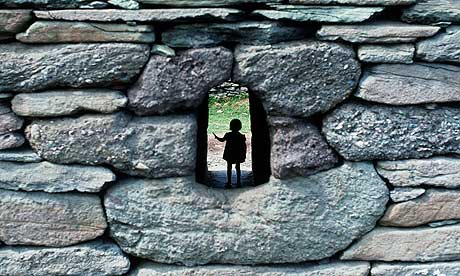Tunnels, doors, mirrors, rabbit holes, wardrobes, tollbooths, cyclones—all these and more can be portals to other worlds. Literature, film, and popular storytelling of all kinds are full of travelers, especially children, who cross the thresholds between our world and the “Lands Beyond.” From Victorians like Lewis Carroll through the turn‐of‐the‐(20th)‐century L. Frank Baum to contemporary cinematic fantasists like Henry Selick and Guillermo del Toro, portal stories—that is, tales about passing, literally or figuratively, into other worlds—imply how experiences in alternate worlds can relate to or comment on our own.
Crossing the portal is an inexhaustible narrative trope, and portal-quests a recognized genre of story. Sometimes the portal is literal and obvious—a doorway, a physical barrier, a hole or curtain or looking-glass. At other times the portal is implicit, or may even be a character, a being who acts, as Lori M. Campbell argues, as a porter—a living gateway or opening to the other world. Sometimes that other world, that heterocosm, is explicitly an Other world, a magical one, a land of enchantments and strange powers. It may be a fully developed alternate reality, what Tolkien called a secondary world. On the other hand, sometimes that other world is just a depiction, a reframing, of our own. Often portal stories are blatantly fantastical; sometimes they are realistic.
This blog hopes to serve two purposes: one, to encourage intelligent discussion of the portal story; two, to enrich English 312, a Literature and Film course that I (Prof. Charles Hatfield) will be teaching this spring at CSU Northridge. The subtitle of this particular version of 312 is Wonderland, Oz, and Lands Beyond: Portal Fantasies in Children’s Fiction and Film.
The class will study the portal story in its fantastical guise, with emphasis on children’s tales. We’ll explore the meanings and possibilities of children’s portal fantasy using a wide range of literary and cinematic texts: books such as Carroll’s “Alice” stories, Barrie’s Peter Pan, Baum’s “Oz,” and C.S. Lewis’ “Narnia”; films such as Jan Švankmajer’s Alice and Tim Burton’s Alice in Wonderland; and much scholarship, including articles and book excerpts that will be made available as PDFs via our class’s Moodle site. Other readings and viewings will come into the course by dint of each student’s individual choices.
Students in the course should expect to discuss: adaptations and relationships among media, especially between literature and film; fantasy as a genre; the complexities of depicting (constructing?) childhood in narrative texts; portals, and what they suggest about growth and liminality; and the ideological meanings that surround portal fantasies, for example regarding sexuality and politics.


Leave a comment
Comments feed for this article